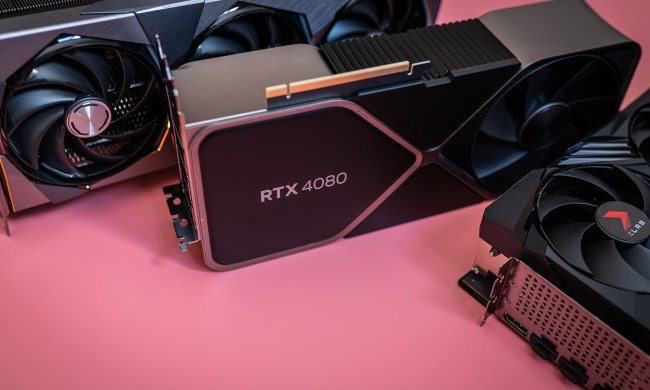One of the desktop’s best traits is its upgradability. If you’d like to change the graphics card, or replace the hard drive, you can do it without replacing the entire system. But doing so requires knowledge that most people don’t have, so this benefit often goes unrealized.
Acer’s making an attempt to fix that with its new Revo Build, a modular desktop computer. The PC’s core is a large section that includes the processor, a hard drive and RAM, the last of which can be upgraded by the user. It is then connected to a graphics card section, which is powered by an unknown graphics solution (Acer now says it’s an AMD chip, but would get no more specific about model than “R7”). These two sections attach through a robust PCI-style connector that’s removable, but does not support hot-swapping. Strangely, each section requires its own power supply.
Once those two are connected, the user can pile on magnetically attached modules — up to five for each power source, which means that up to 10 can be stacked in total. These modules are hot-swappable, so they can be removed and added at any time. Attaching and detaching hardware couldn’t be easier, and the magnets mean each new module snaps into place with a satisfying thunk.
Users can pile on magnetically attached modules — up to five for each power source
The simplicity offered by the Revo Build looks great on paper, and works even better in real life. There’s no way to screw up adding a module, or detaching one, and no instructions required. Everything is immediately intuitive. As a concept, the Build is perfectly executed, and I wouldn’t be surprised if we see the ideas pushed by this desktop turn up in others. I can easily imagine, for example, a full tower desktop that provides a bank of five magnetic ports along the top for easily peripheral attachment.
azer introduces the never-ending computer, Project ChristineUnfortunately, there’s a problem that spoils the fun. The Build doesn’t have many modules available. As of right now only three are announced; a portable hard drive with 500GB or 1TB mechanical capacity, a power back with wireless phone charging pad, and a speaker. None of that’s exciting, and it’s all stuff that users can already attach “modularly” — through USB and other connection standards. The dream, I think, is that it reach a point where video cards or RAM can be added without even opening the case, but that’s not what Acer is offering.
The hardware is ho-hum, as well, as the tiny system will launch only with Intel’s Braswell-based Celeron and Pentium chips. These are not related to well-known Core model line, and significantly slower. Up to eight gigabytes of RAM can be ordered. Based on these specs, I expect the system’s performance will barely exceed entry-level Chromebooks.
Acer’s wild card is the unknown AMD GPU. While it’s unlikely to offer stunning performance (even if it did, the CPU would hold it back), the chip does support 4K resolution. That, combined with the price of 199 euros (about $220), does give the Build a unique selling point. It’s one of the least expensive PCs in existence that can handle UltraHD.
The Build is one of the most affordable desktops to support 4K.
I’m uncertain of the Build’s chances. Its low price point is welcome, and means that some may buy it not because they want a modular PC specifically, but because they want an inexpensive PC, whatever its capabilities. Any design like this needs to reach critical mass (otherwise, producing the modules isn’t worthwhile), and the price could help.
But the Build also falls short of what I think most people want from a modular design, and as such, it feels redundant. Slotting a disk into place with the power of magnets is fun, sure. But we already have USB 3.0. Is connecting it so hard that users will purchase a specific PC, and specific hard drive, to avoid the hassle?
We’ll find out soon enough. The Revo Build will launch in Europe in October, then China in December. If that goes well, a United States release could happen after CES 2016 in January.
Highs
- Modules are easy attach or remove
- Can power a 4K display
- Inexpensive
Lows
- Only one module at launch
- Major hardware upgrades aren’t possible
- Requires two power cables





